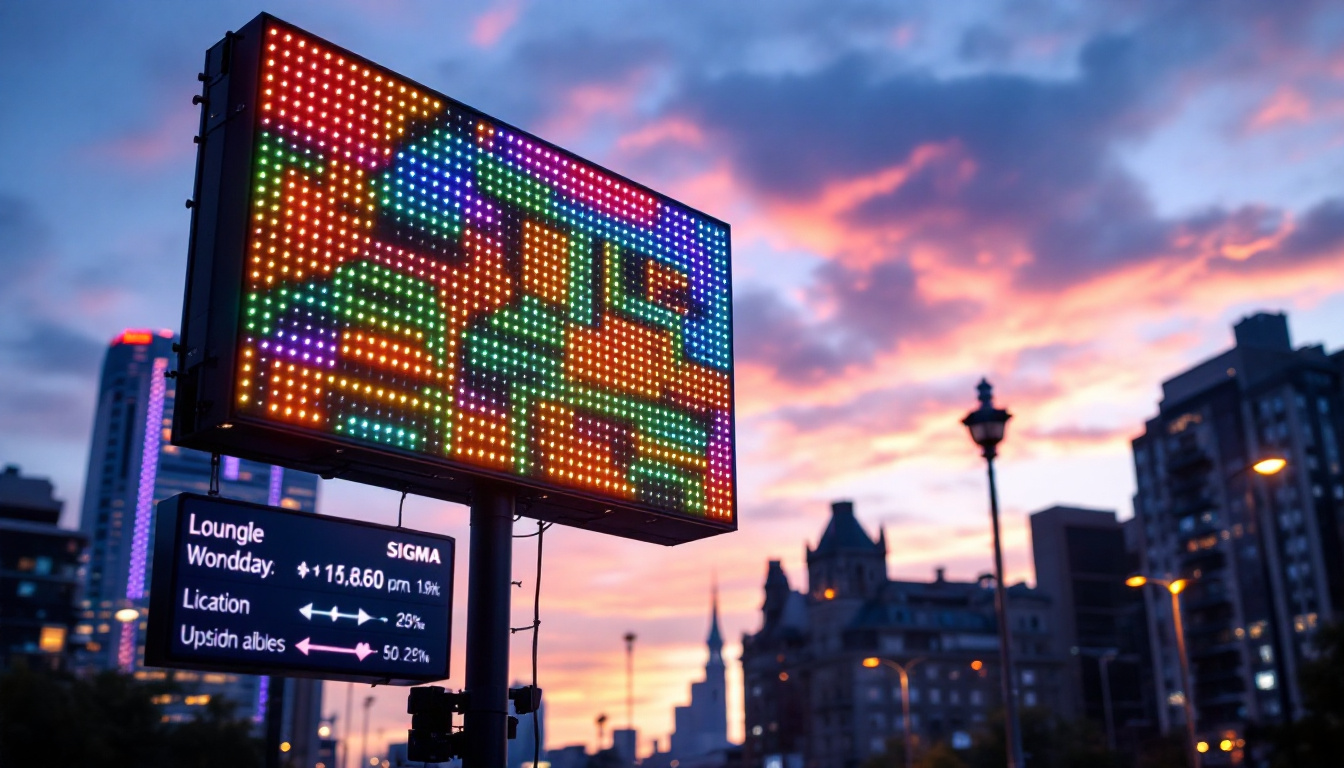In an era where visual communication is paramount, touch screen digital signage has emerged as a transformative tool for businesses, educational institutions, and public spaces. These interactive displays not only captivate audiences but also enhance user engagement through intuitive touch capabilities. This article delves into the intricacies of touch screen digital signage, focusing on LED technology, its applications, advantages, and future trends.
Understanding Touch Screen Digital Signage
Touch screen digital signage integrates advanced display technology with interactive features, allowing users to engage directly with the content. Unlike traditional signage, which merely broadcasts information, touch screen systems enable users to navigate through menus, access information, and even make purchases, all with a simple touch. This interactivity not only enhances user experience but also increases engagement, making it a powerful tool for businesses looking to connect with their audience in a meaningful way.
As consumers become more accustomed to interactive technology in their daily lives, the demand for touch screen digital signage continues to grow. From retail environments where customers can browse products and check prices to museums where visitors can explore exhibits in depth, the applications are virtually limitless. Businesses are increasingly leveraging this technology to create immersive experiences that captivate and inform their customers.
The Technology Behind Touch Screens
At the heart of touch screen digital signage lies a combination of hardware and software designed to create a seamless user experience. The most common types of touch screen technology include resistive, capacitive, and infrared. Each type has its own unique advantages that cater to different environments and user needs.
Resistive touch screens respond to pressure, making them suitable for environments where users may wear gloves or use styluses, such as industrial settings or outdoor kiosks. Capacitive touch screens, on the other hand, detect touch through the electrical properties of the human body, offering a more responsive experience that is ideal for high-traffic areas like shopping malls. Infrared touch screens utilize a grid of infrared light beams, allowing for multi-touch capabilities and greater durability, making them perfect for interactive displays in public spaces where heavy use is expected.
LED Display Technology
Light Emitting Diode (LED) technology has revolutionized digital signage. LED displays are known for their brightness, energy efficiency, and longevity, making them ideal for both indoor and outdoor applications. The pixels in an LED display are composed of tiny diodes that emit light when an electric current passes through them, resulting in vibrant colors and sharp images. This capability is particularly beneficial for capturing the attention of passersby in busy environments, where traditional signage might struggle to stand out.
Moreover, LED displays can be configured in various ways, including full-color displays for dynamic content and monochrome displays for simpler applications. This versatility allows businesses to choose the right type of display based on their specific needs. Additionally, advancements in LED technology have led to the development of ultra-thin and flexible displays, enabling creative installations that can fit into unconventional spaces. As a result, businesses can now design eye-catching displays that not only convey information but also enhance the aesthetic appeal of their surroundings, further engaging their audience and driving foot traffic.
Applications of Touch Screen Digital Signage
Touch screen digital signage finds applications across various sectors, each leveraging its interactive capabilities to enhance user experience and streamline operations.
Retail Environments
In retail, touch screen digital signage serves as an interactive catalog, allowing customers to browse products, check prices, and even place orders. This not only enhances the shopping experience but also reduces the need for staff assistance, enabling employees to focus on customer service.
Additionally, retailers can use these displays for targeted advertising, showcasing promotions or new arrivals based on customer interactions. The ability to analyze user data further allows businesses to tailor their offerings and marketing strategies effectively.
Educational Institutions
Educational institutions are increasingly adopting touch screen digital signage to facilitate learning and improve communication. Interactive displays can be used in classrooms for presentations, allowing students to engage with the material actively. They can also serve as information kiosks in hallways, providing students and visitors with essential information about events, schedules, and campus resources.
Moreover, the integration of touch screen technology in educational settings fosters collaboration among students, encouraging group work and interactive learning experiences.
Transportation Hubs
Airports, train stations, and bus terminals are utilizing touch screen digital signage to enhance passenger experience. These displays can provide real-time information on schedules, delays, and gate changes, allowing travelers to stay informed. Interactive maps and wayfinding solutions also help passengers navigate complex terminals with ease.
Furthermore, touch screen kiosks can offer additional services, such as ticket purchasing and check-in, streamlining the travel process and reducing congestion at service counters.
Advantages of Touch Screen Digital Signage
The benefits of implementing touch screen digital signage are numerous, making it an attractive option for various industries. Here are some of the key advantages:
Enhanced User Engagement
Touch screen digital signage fosters a higher level of engagement compared to traditional displays. Users can interact with the content, leading to a more immersive experience. This interactivity can capture attention and encourage users to spend more time exploring the information presented.
Moreover, the ability to customize content based on user preferences enhances relevance, making the experience more enjoyable and informative.
Cost-Effectiveness
While the initial investment in touch screen digital signage may be higher than traditional signage, the long-term savings can be significant. Digital signage reduces the need for printed materials and allows for quick updates to content without incurring additional costs. This flexibility enables businesses to respond rapidly to changing circumstances, such as promotions or events.
Additionally, the energy efficiency of LED displays contributes to lower operational costs, making them a sustainable choice for organizations.
Data Collection and Analytics
One of the standout features of touch screen digital signage is its ability to collect data on user interactions. Businesses can analyze this data to gain insights into customer behavior, preferences, and trends. This information can inform marketing strategies, product offerings, and overall business decisions.
By understanding how users engage with the content, organizations can continually refine their approach to maximize effectiveness and improve customer satisfaction.
Challenges and Considerations
Despite the numerous advantages, there are challenges associated with implementing touch screen digital signage. Organizations must carefully consider these factors to ensure successful deployment.
Maintenance and Durability
Touch screen displays, particularly those used in high-traffic areas, may require regular maintenance to ensure optimal performance. Dust, fingerprints, and wear and tear can affect the display’s functionality and appearance. Organizations must establish a maintenance schedule and invest in protective measures to prolong the lifespan of the equipment.
Additionally, choosing durable materials and robust technology can mitigate issues related to wear and tear, ensuring that the displays remain effective over time.
Content Management
Effective content management is crucial for the success of touch screen digital signage. Organizations must develop a strategy for creating, updating, and managing content to keep it relevant and engaging. This may involve dedicating resources to content creation, design, and scheduling.
Moreover, utilizing a content management system (CMS) can streamline the process, allowing for easier updates and ensuring that the right content is displayed at the right time.
User Training
To maximize the benefits of touch screen digital signage, users must be adequately trained on how to interact with the displays. This is particularly important in environments where users may not be familiar with the technology. Providing clear instructions and support can enhance user experience and ensure that the signage is utilized effectively.
Future Trends in Touch Screen Digital Signage
The landscape of touch screen digital signage is continually evolving, with advancements in technology paving the way for exciting new possibilities. Here are some trends to watch for in the coming years:
Integration with Artificial Intelligence
As artificial intelligence (AI) technology advances, its integration into touch screen digital signage is becoming more prevalent. AI can enhance user experience by personalizing content based on user behavior and preferences. For instance, AI-driven systems can analyze data in real-time to display relevant promotions or information, creating a tailored experience for each user.
Furthermore, AI can facilitate voice recognition and natural language processing, allowing users to interact with displays using voice commands, further enhancing accessibility.
Augmented Reality Experiences
Augmented reality (AR) is another trend that is gaining traction in the realm of digital signage. By overlaying digital information onto the physical world, AR can create immersive experiences that engage users in new ways. For instance, touch screen displays can allow users to visualize products in their own environment, enhancing the decision-making process.
This technology can also be utilized for interactive storytelling, educational experiences, and gamification, making touch screen digital signage more captivating and effective.
Increased Use of Cloud-Based Solutions
Cloud-based content management systems are becoming increasingly popular for managing touch screen digital signage. These solutions offer flexibility, scalability, and remote access, allowing organizations to update content from anywhere in the world. This is particularly beneficial for businesses with multiple locations, as it streamlines the process of managing signage across various sites.
Moreover, cloud-based systems often come with built-in analytics tools, enabling organizations to easily track performance and user engagement metrics.
Conclusion
Touch screen digital signage, powered by LED display technology, represents a significant advancement in the way information is communicated and interacted with. Its applications span across various sectors, providing enhanced user engagement, cost-effectiveness, and valuable data insights.
While challenges such as maintenance, content management, and user training exist, the benefits far outweigh the drawbacks. As technology continues to evolve, the future of touch screen digital signage looks promising, with innovations such as AI, AR, and cloud solutions poised to redefine the landscape.
Organizations that embrace touch screen digital signage are not only enhancing their communication strategies but also positioning themselves at the forefront of interactive technology, ready to meet the demands of an increasingly digital world.
Discover LumenMatrix’s Innovative LED Solutions
Ready to elevate your interactive communication strategy with leading-edge LED display technology? LumenMatrix offers a diverse range of LED display modules designed to captivate your audience and amplify your brand’s presence. From Indoor and Outdoor LED Wall Displays to specialized solutions like Vehicle, Sports, and Floor LED Displays, our products are crafted to create unforgettable visual experiences. Embrace the future of digital signage with our Custom, All-in-One, and Transparent LED Displays. Check out LumenMatrix LED Display Solutions today and transform your space into a dynamic, engaging environment.































